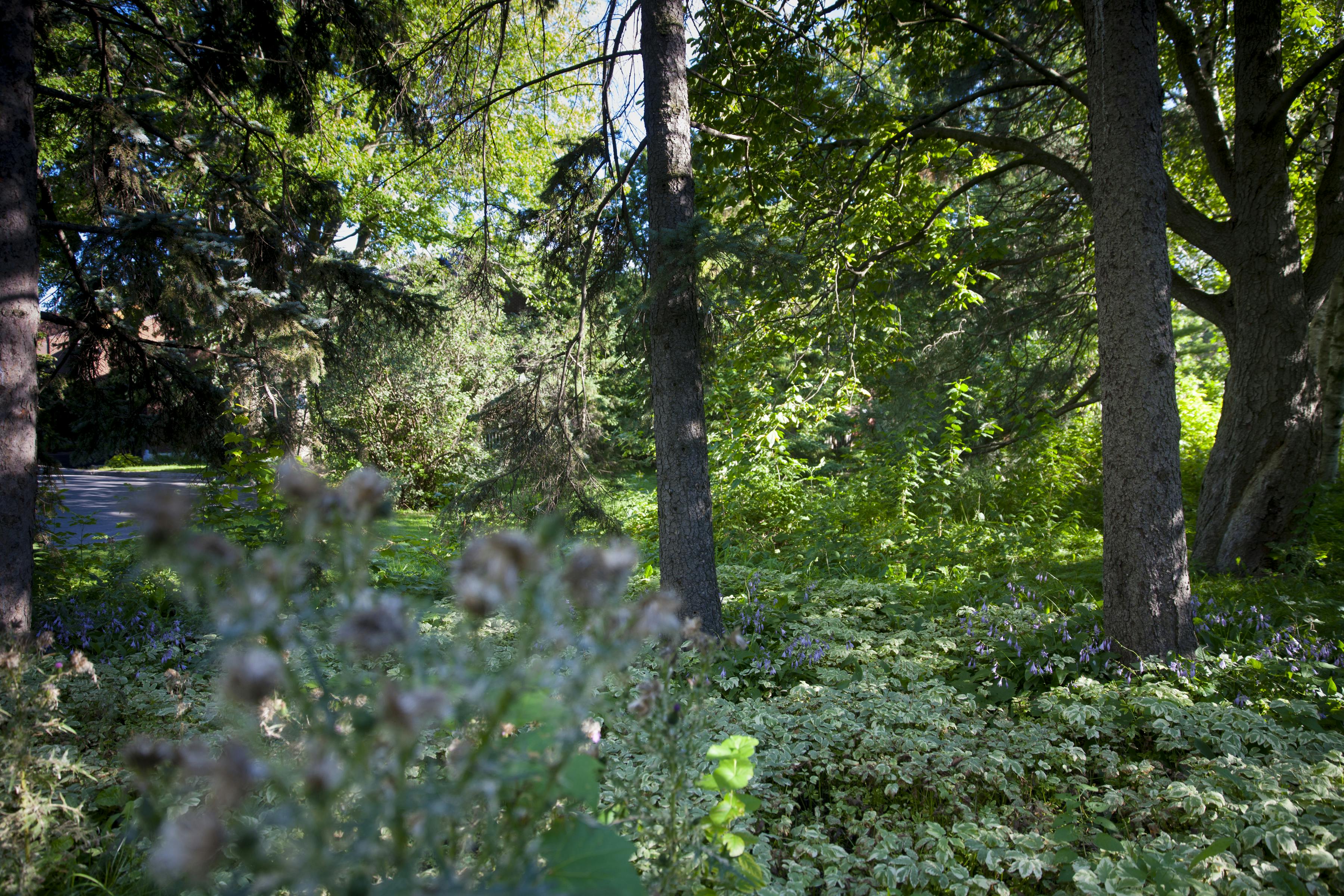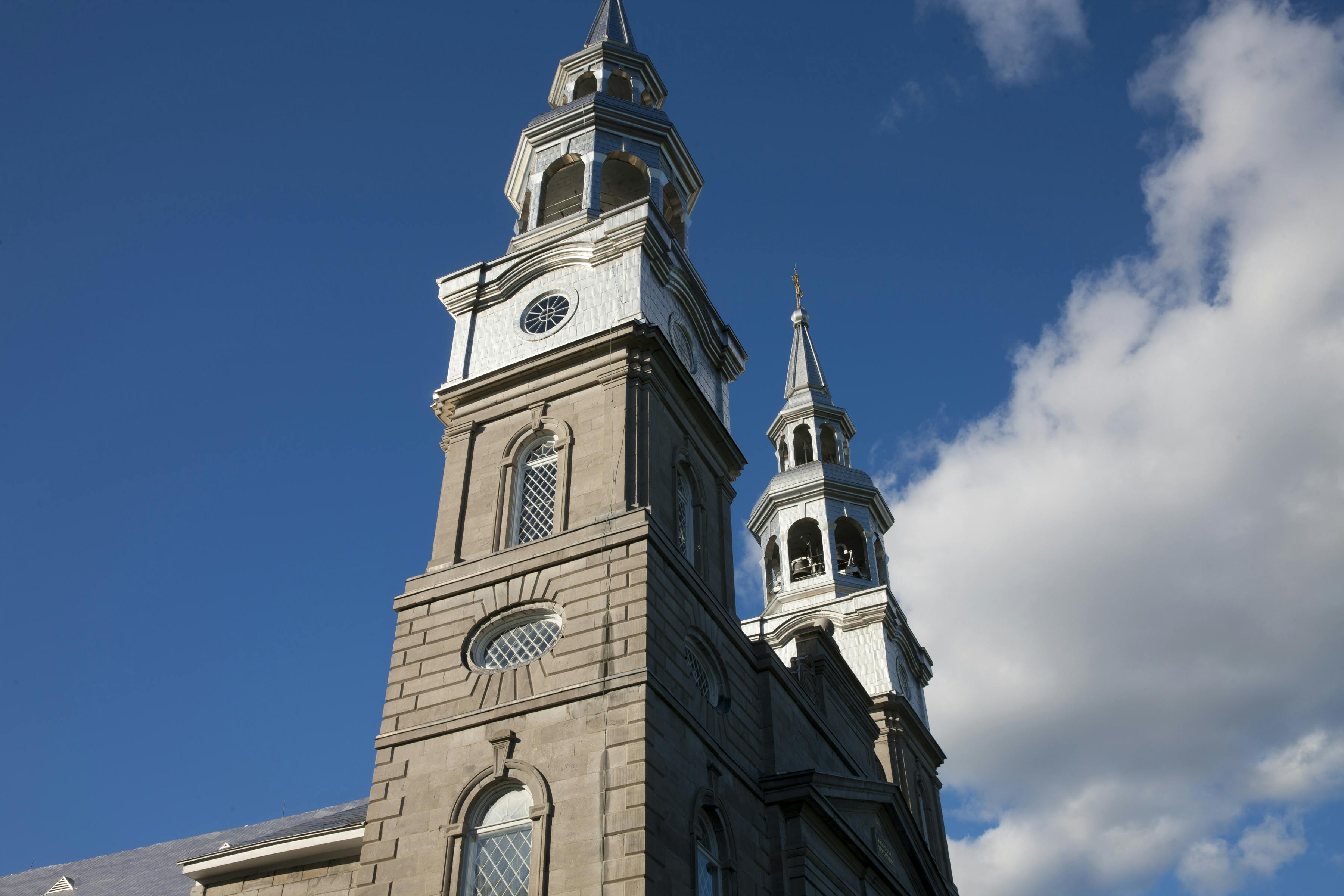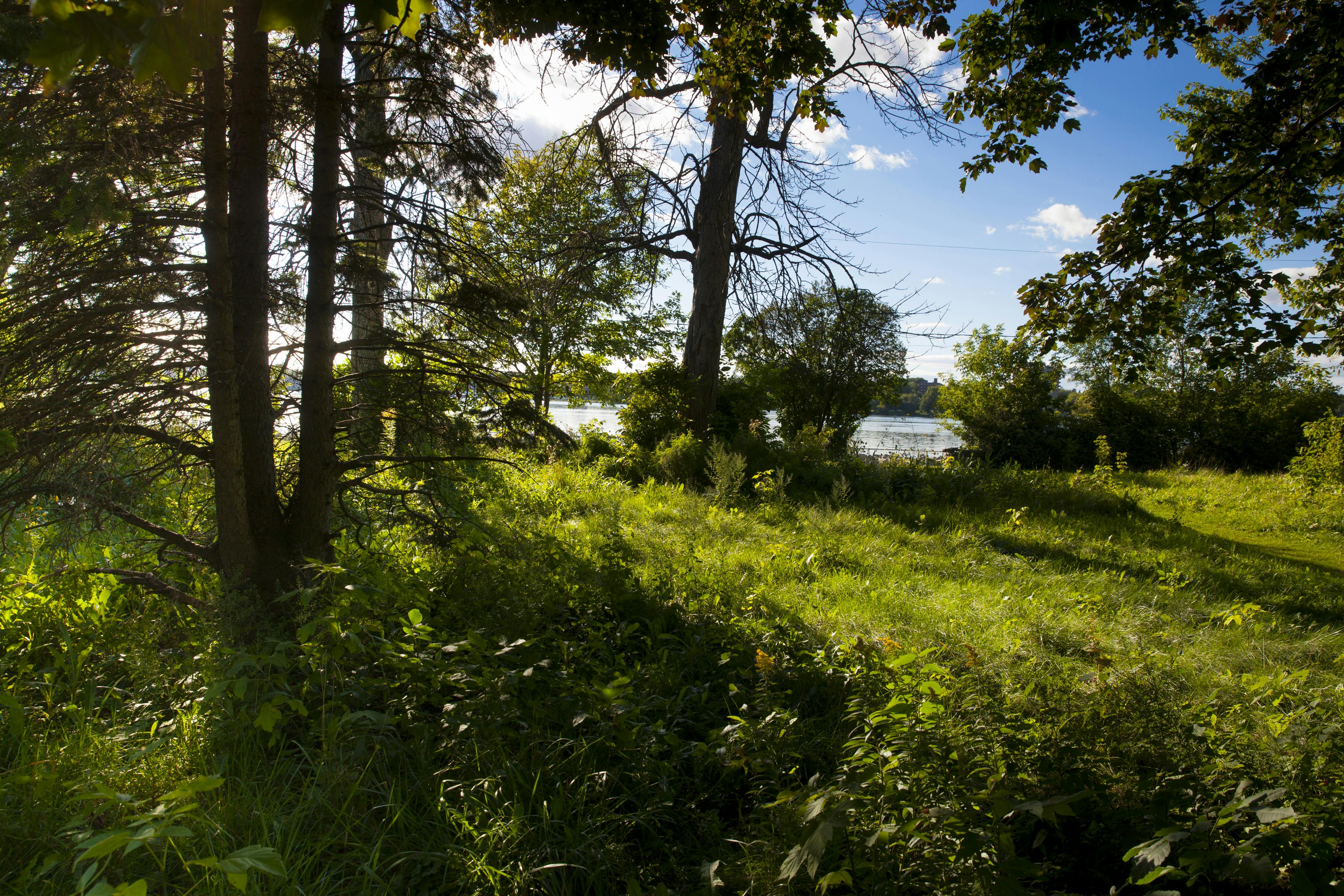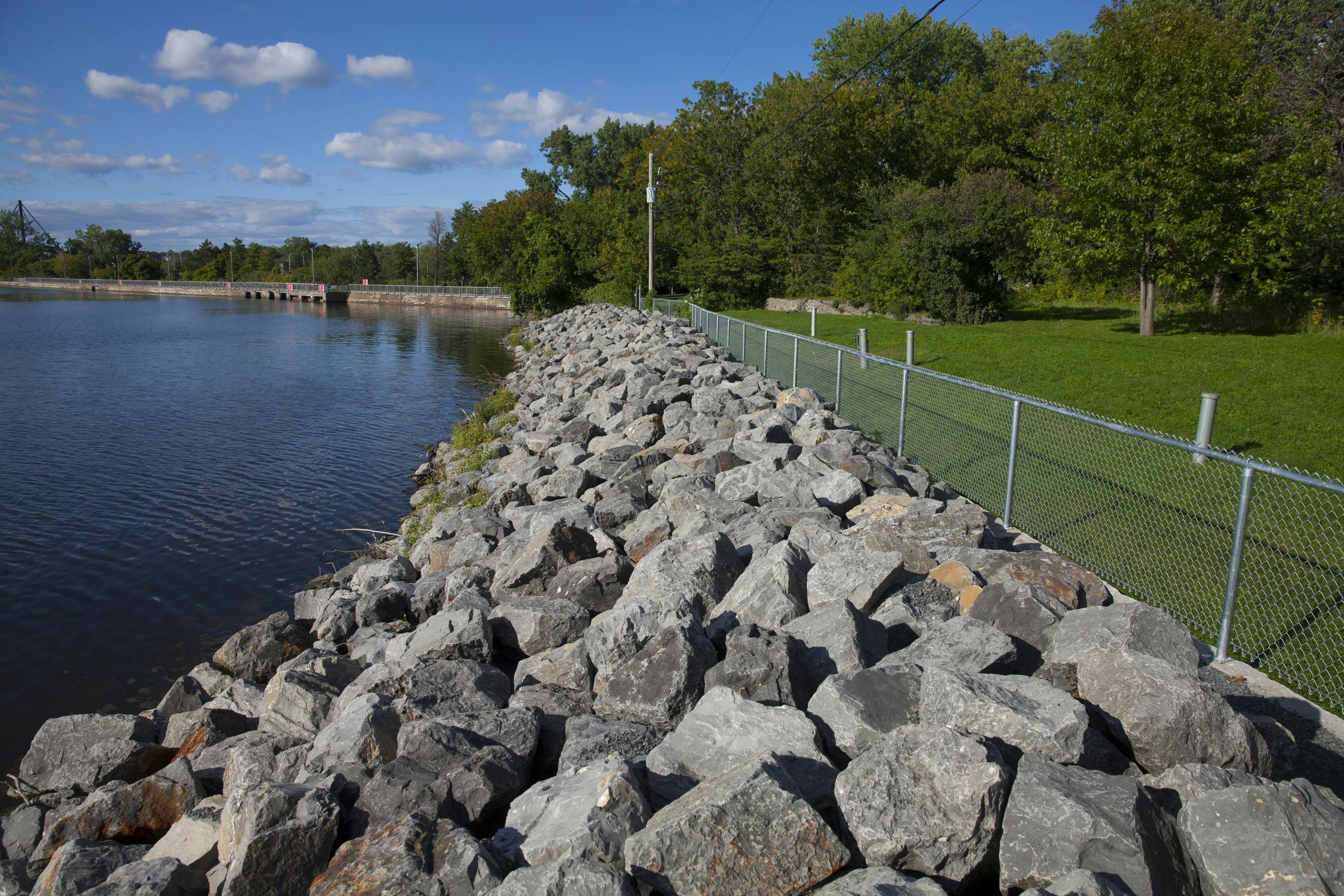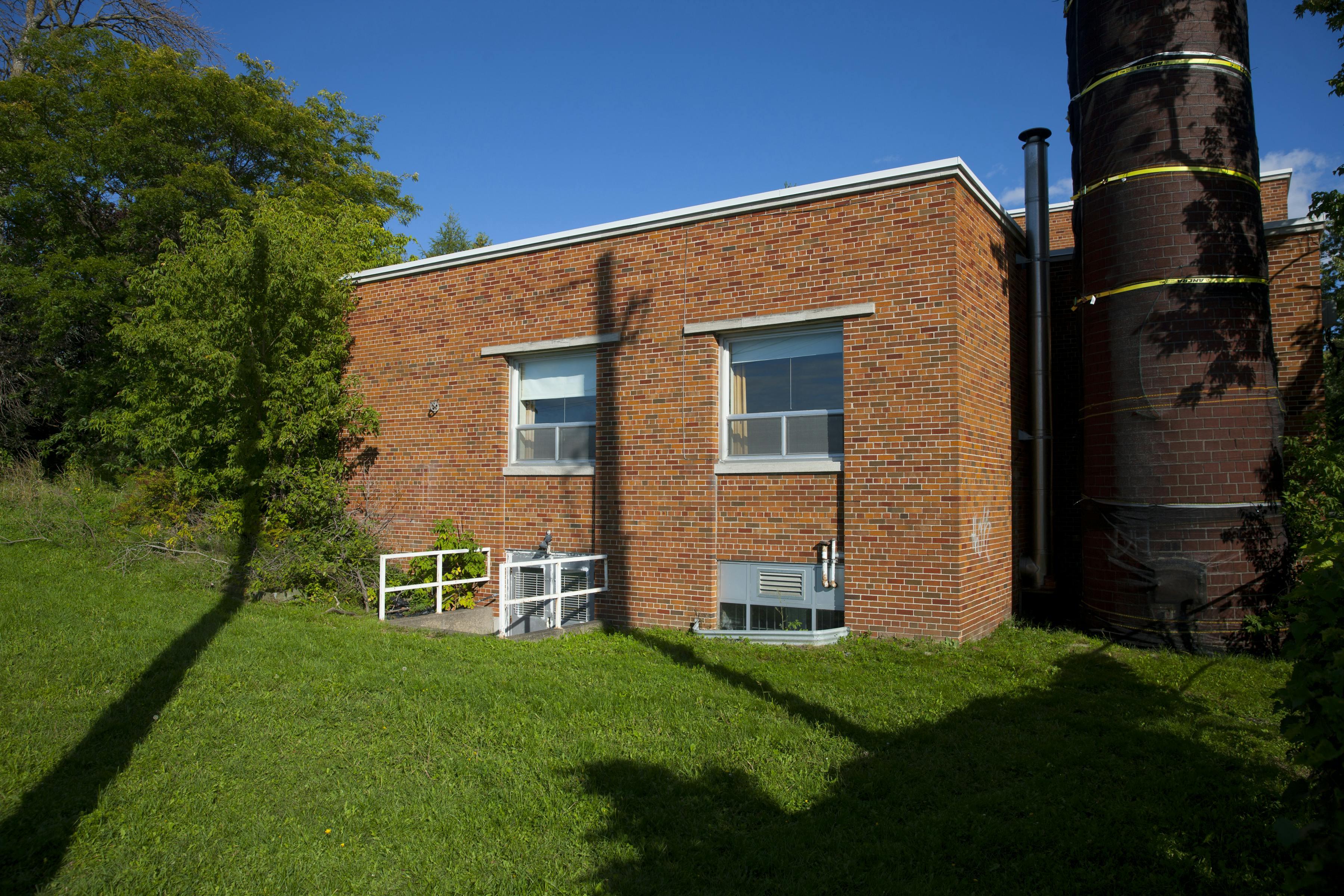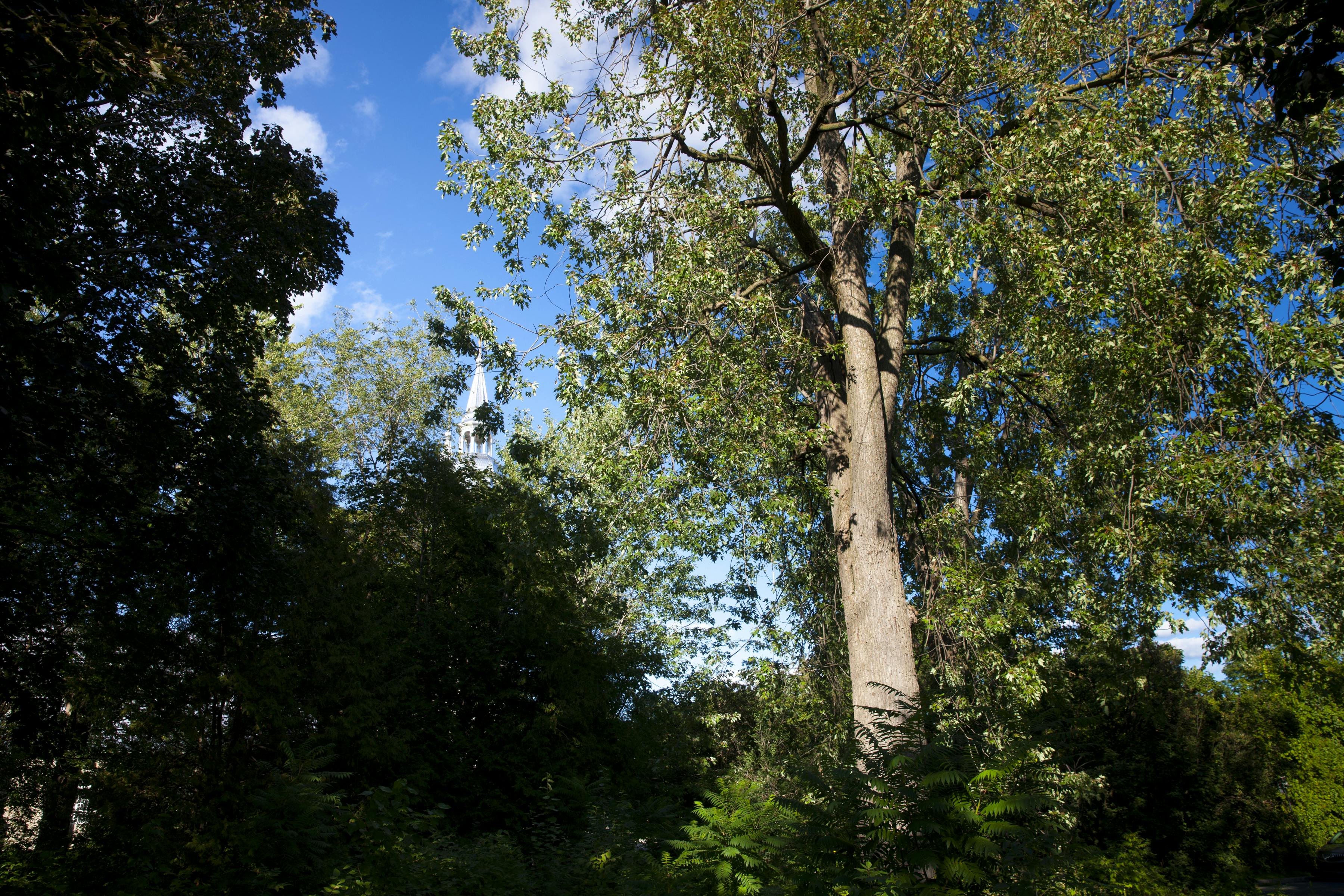Fort-Lorette Project
La consultation a pris fin, merci.
In 2018, Montréal acquired the Fort-Lorette site in Ahuntsic-Cartierville, on the banks of the Rivière des Prairies. The site covers an area of more than 6,000 square meters. The project involves creating a public space and requalifying the former laundry building of the Sisters of Misericorde for contemporary use.
The city and local partners agreed on a vision to guide future planning in order to protect and highlight this exceptional archaeological heritage site and riverside landscape.
Consultation process
The city is undertaking a consultation process to design a space that both preserves the site’s heritage values and meets the needs of the community.
In 2018, Montréal acquired the Fort-Lorette site in Ahuntsic-Cartierville, on the banks of the Rivière des Prairies. The site covers an area of more than 6,000 square meters. The project involves creating a public space and requalifying the former laundry building of the Sisters of Misericorde for contemporary use.
The city and local partners agreed on a vision to guide future planning in order to protect and highlight this exceptional archaeological heritage site and riverside landscape.
Consultation process
The city is undertaking a consultation process to design a space that both preserves the site’s heritage values and meets the needs of the community.
La consultation a pris fin, merci.
-
Presentation of the survey results
Share Presentation of the survey results on Facebook Share Presentation of the survey results on Twitter Share Presentation of the survey results on Linkedin Email Presentation of the survey results linkParticipatory approach: Fort-Lorette site
Many of you participated in the online survey and provided feedback on the development scenarios for the Fort-Lorette site. From November 15 to December 16, nearly 250 respondents shared their views and proposed ideas regarding the three scenarios being presented. We would like to thank you for your abundant feedback, which has provided the designers with food for thought.
The results of the survey, which are compiled in this report, have collectively articulated a vision of the desired atmosphere, landscape and types of uses of the heritage site to ensure that the site development reflects the heart of the community and its values. Although several points had mixed results, a few key observations emerged—in particular, the importance of protecting and showcasing the archaeological remains and natural character of the site.
During the spring, the project team will propose a preliminary design concept based on these results. Rest assured that the planning and design process for the future Fort-Lorette site will take your contribution to heart.
Would you like to find out more about the project? Enter your email address in the top-right section of the page. We’ll keep you updated on the team's progress and next steps.
-
Vision and Scenarios
Share Vision and Scenarios on Facebook Share Vision and Scenarios on Twitter Share Vision and Scenarios on Linkedin Email Vision and Scenarios linkIn 2019, following citizen and community consultation exercises, a vision for the development of the Fort-Lorette site was drafted, an outline of which is reproduced here:
The Fort-Lorette site is a national historical destination while being a quality environment for residents and visitors by showcasing:
- The millennial occupation of the area by First Nations;
- The archaeological remains of the Fort-Lorette mission;
- The meeting place between Indigenous and European communities;
- The contribution of successive religious institutions;
- Its belonging to the cultural and historical landscape of the Ancien-Village-du-Sault-au-Récollet;
- Its landscaping qualities, particularly its large trees and its location on the banks of the Rivière des Prairies, in connection with the nature park network;
- The attachment and mobilization of the community to make it a meaningful public space.
The development scenarios for the Fort-Lorette site unveiled here were created in response to this vision and the orientations expressed in 2019. The presentation of three scenarios allows us to assess different ways of approaching the development of this exceptional site. Please take the time to familiarize yourself with the three scenarios.A background to the design exercise and a more detailed presentation of the scenarios is available in Scenarios for the redevelopment of the Fort Lorette site, september 30 2020.
Once you have read the scenarios, go on to the Survey and Life Story sections.
Scenario 1: The WindowThis option proposes a one-off, cross-site option in the form of a linear trench from the church parking lot to the riverbank. This trench or window cuts across the site of the fort’s archaeological remains and the foundations of the old nursery and delimits a space or garden that interprets the rich history of the place. The garden is bordered with facing steps and opens onto a cantilevered belvedere over the river. Expressing the figure of a sacred circle or medicine wheel, this public terrace offers a canvas for the expression of the First Nations’ millennial culture and a place of dialogue. The heritage interpretive garden and the sacred circle are juxtaposed in an effort of mutual enrichment.
Scenario 2: The Waterside GatewaysThis option intervenes at the perimeter of the archaeological site, leaving it to continue its transformation into an area of biodiversity. The geometric contour of the old fort is recalled through a series of openings repeating and translating its broken facade. These gateways delimit a series of on-site interventions facing the river: promenade, interpretive furniture, water feature and gardens. The furniture supports a didactic and sensitive communication of the site’s history; the water feature recalls the river, but also challenges memory; the garden celebrates the animist spirits characteristic of First Nations cultures. This is a healing garden. The trunks of two dead trees are recovered as trees of life.
Scenario 3: The Intimate StationsThis option is defined by a series of more intimate interventions scattered around the site and its natural setting. In the shape of small lounges, the stations reinterpret the recognizable geometry of the old fort’s corner bastions. Two more important installations formalize the entrance to the site from the church side – over the footprint of the first chapel– and provide a terrace over the river in the extension of Rue du Fort-Lorette. Two other stations mark the wider limits of the site, with their access from Boulevard Gouin and from the Simon-Sicard dike. The three stations positioned above the trace of the old fort create distinctive spaces for meditation on the history and the relations between nations and community. They have the scale and function of an Elders’ Lounge.
Important Links
Lifecycle
-
2017
Fort-Lorette Project has finished this stage- Archaeological site is discovered
-
2018
Fort-Lorette Project has finished this stage- City purchases the property
- Québec government classifies the site as a heritage site
-
2019
Fort-Lorette Project has finished this stage- Ahuntsic-Cartierville holds a public consultation
- Discussions take place between local representatives
-
2020
Fort-Lorette Project has finished this stage- October and November: Co-operative group consultation and online survey on three layout scenarios
-
2021
Fort-Lorette Project is currently at this stage- January: Presentation of the survey results
- Development of a preferred scenario
- Environmental study conducted
- Archaeological interventions
Photos
Documents
-
 Bilan du sondage final des scénarios d'aménagement.pdf (3.51 MB) (pdf)
Bilan du sondage final des scénarios d'aménagement.pdf (3.51 MB) (pdf)
-
 Rapport archéologique 2017 (9.37 MB) (pdf)
Rapport archéologique 2017 (9.37 MB) (pdf)
-
 Rapport archéologique 2018 (72 MB) (pdf)
Rapport archéologique 2018 (72 MB) (pdf)
-
 Énoncé de l'intérêt patrimonial du 12 375, rue du Fort-Lorette
Énoncé de l'intérêt patrimonial du 12 375, rue du Fort-Lorette
-
 Scenarios for the redevelopment of the Fort Lorette site (51.6 MB) (pdf)
Scenarios for the redevelopment of the Fort Lorette site (51.6 MB) (pdf)
-
 Rapport synthèse des ateliers de concertation (16.4 MB) (pdf)
Rapport synthèse des ateliers de concertation (16.4 MB) (pdf)





